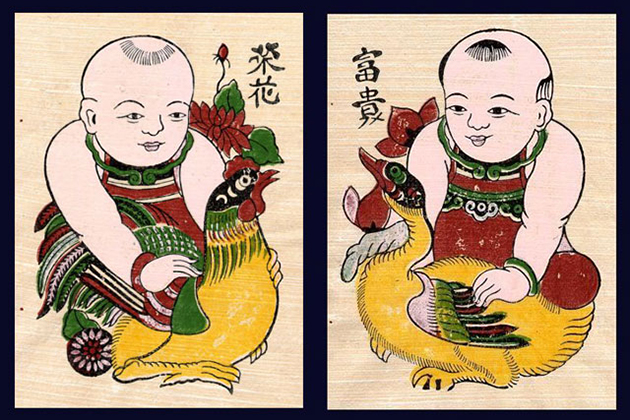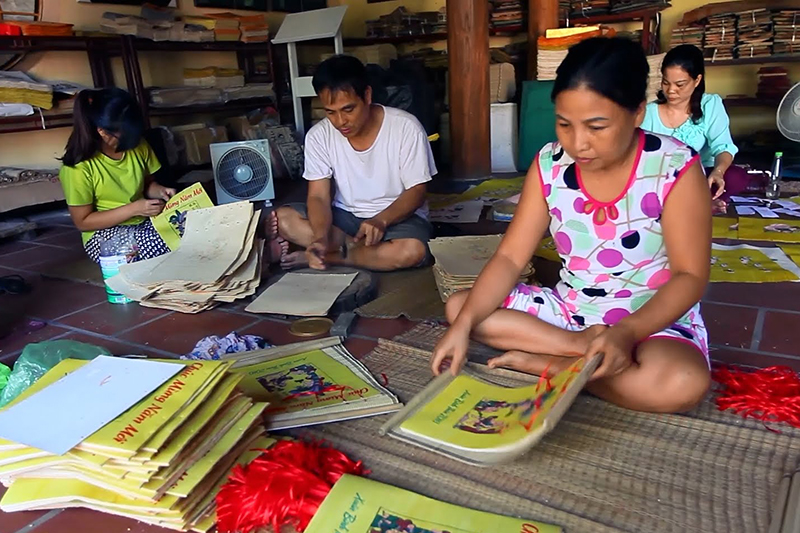For a long time, there has been a line of Vietnamese folk art originating from Dong Ho Village, Bac Ninh province known as a quintessence of folklore in Vietnam. Not only is it attractive, unique in color, harmonious in composition and sophisticated in the layout of the painting but it is also made of the completely natural material, which perhaps only has in Vietnam.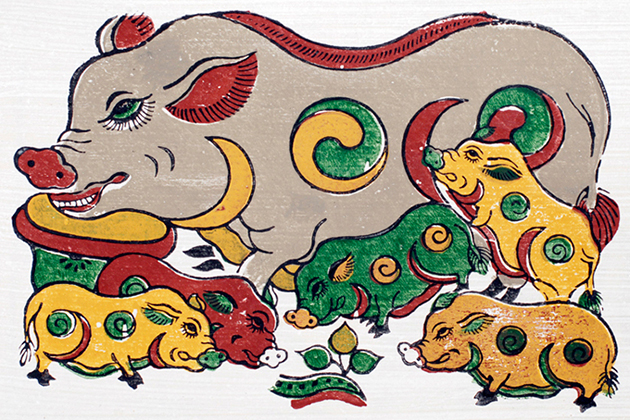
What is Dong Ho painting?
Dong Ho painting, short for Dong Ho folk woodcut painting, is a line of Vietnamese folk painting originating in Dong Ho Village (Bac Ninh province) around the 17th century. This place has a productive land, agricultural development, rich cultural life,…, which becomes a cradle of a rustic painting. Dong Ho painting is one of the most traditional paintings along with Hang Trong painting Ha Noi and Kim Hoang painting in Ha Tay.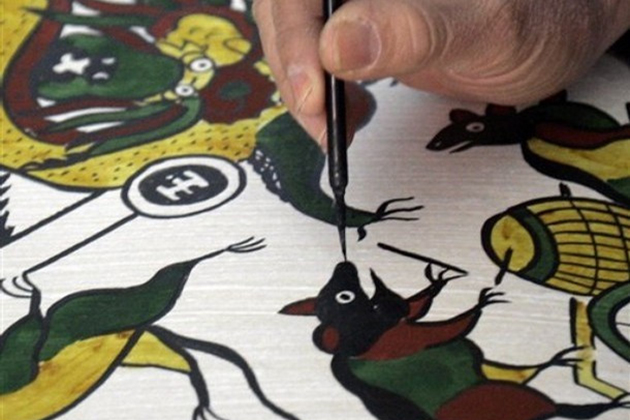
Themes of Dong Ho
Dong Ho painting is often bought and decorated in Tet holiday. This is an elegant pleasure, a beautiful custom of the Vietnamese, especially in the Northern Delta. Every Lunar New Year, whether the rich or the poor, in addition to Chung cake, fatty meat, pickle, red couplets and traditional paintings are also indispensable things. These colorful folk paintings make the atmosphere cozier and merrily. However, Dong Ho painting is not the illustration of the New Year but it brings the wishes and blessing for a happy and prosperous new year through folk and close symbols.
With the abundance and diversity of style, genre and theme, Dong Ho painting reflect almost everything that happens in the idyllic life of Vietnamese people such as Picking Coconut, Jealously Scene, Herding Buffalo to beautiful dreams or human aspirations for better life such as Chickens, Pigs, Eminence, Prosperity and Honour,… It also contains implication and the reminder about right and wrong things in life and brings an optimistic and affectionate look for the future.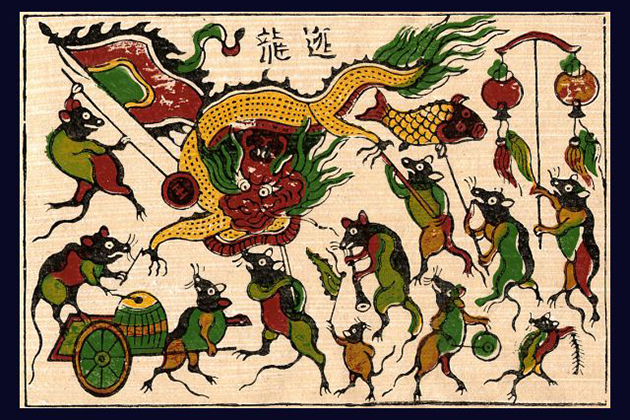
Unique features of Dong Ho painting
The first unique attraction of Dong Ho painting is the color and paper material. The paper used for printing Dong Ho painting is điệp paper, obtained from dó tree. It has some outstanding features: thin, high-fiber, easy to absorb color and not being blurred out when printing. The powder is made from the heated scallop shell, mashed and then mixed with the glue of glutinous rice, then scanned on paper with a bloom. Due to the elements of seashell and glutinous rice, điệp paper possesses a glamorous sparkling hard background. It can be said in Dong Ho painting, only the shine of the background is enough to make it attractive.
In addition, color printing is also a unique feature in the process of creation. All colors are made from flowers, leaves, fruits, trees in nature such as the black color taken from bamboo charcoal; the yellow color is taken from luscious; the green color taken from indigo leaves,…In that way, a Dong Ho painting can retain its colors for a long time.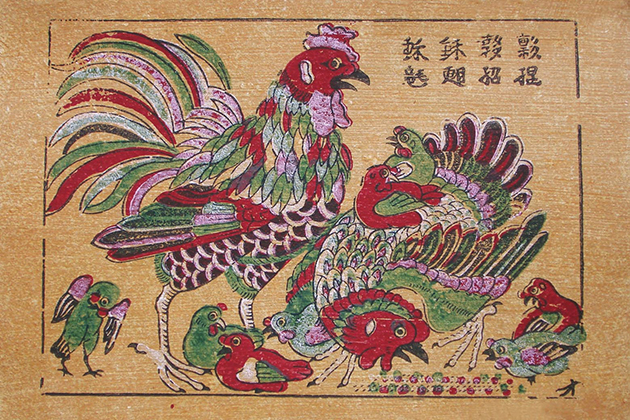
The meaning and philosophy in some Dong Ho paintings
Dong Ho Painting – Picking Coconut Painting (Hung Dua)
The painting expresses the concept of a happy family in a country including a wife, a husband and two children. The husband with the difficult job is to climb up the coconut trees as the mainstay of the family, who have a career and bravely overcome all the challenges. The wife is picking coconut as the rear, who always support her husband when necessary. In the painting, she does not use the hand but the skirt to pick up the coconut, which makes the scene funnier. The children cling to the tree as if they want to share the hard work or to imitate the father overcome all dangers.
The beauty of a happy family is fully expressed in the painting. A family is the fundamental cell of society, in which the husband and the wife always love and help each other. They also have good children who sympathize with the struggles of their parents.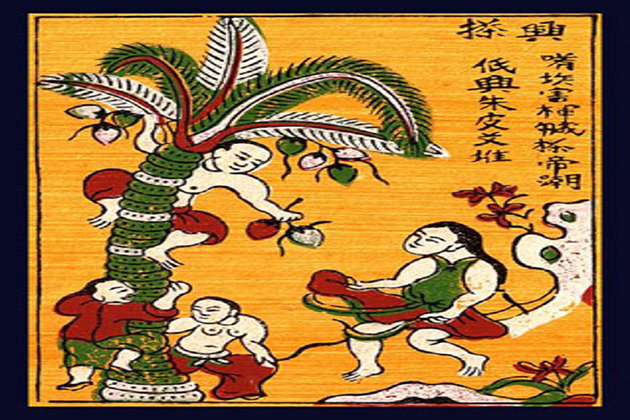
Dong Ho Painting – Jealously Scene Painting (Danh Ghen)
Under the feudal system, women must obey the ethical behavior. The painting represents the aspiration and resistance of women under Confucianism. The caricature is expressed in the exaggeration of the shapes and lines in the picture, which creates the humor and the excitement before a family tragedy. With Jealously Scene, we can see the static and dynamic elements are harmoniously combined. The static elements in the painting are a pine tree, bonsai, flower wall. In contrast, the dynamic is two wives pulling each other drastically between the husband the child.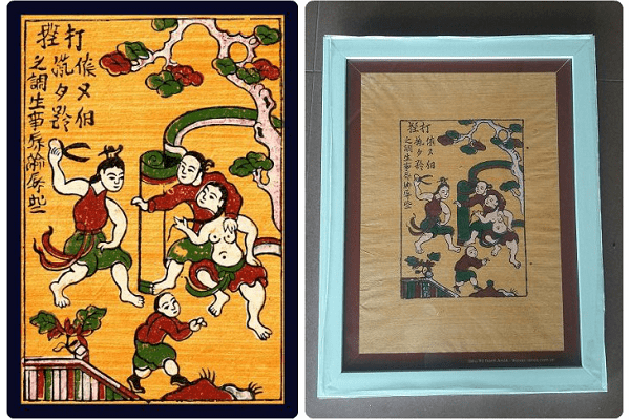
Dong Ho Painting – Eminence Painting (Vinh Hoa)
With the chubby cheek of the baby and the fat chicken, the viewer can envision the scene of a lush crop, chicken filled the yard of the farmer. The boy is hugging the chicken next to the daisy with the expectation of a glorious future. The picture has a simple layout, flexible lines and bright colors.